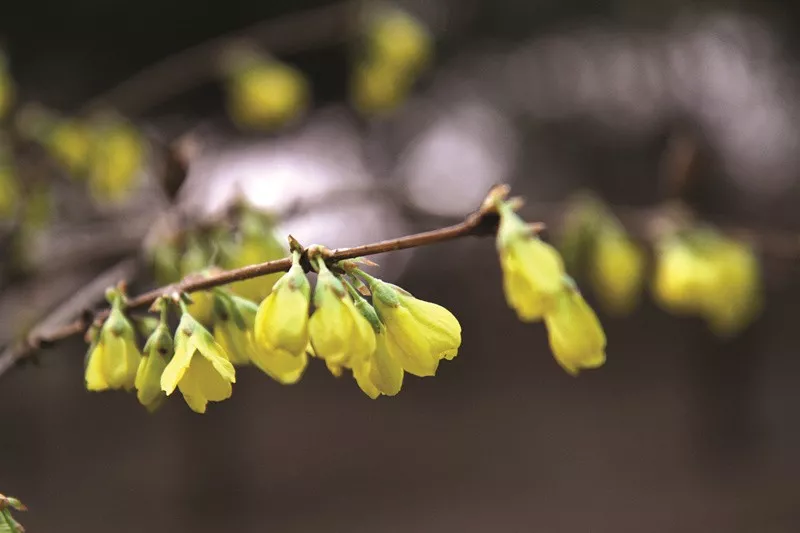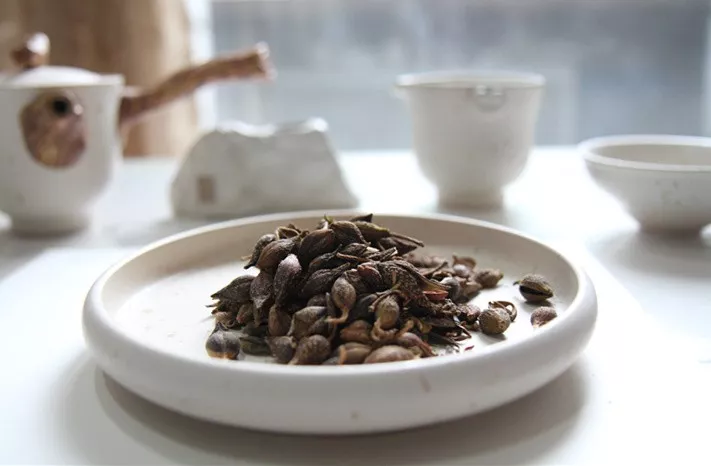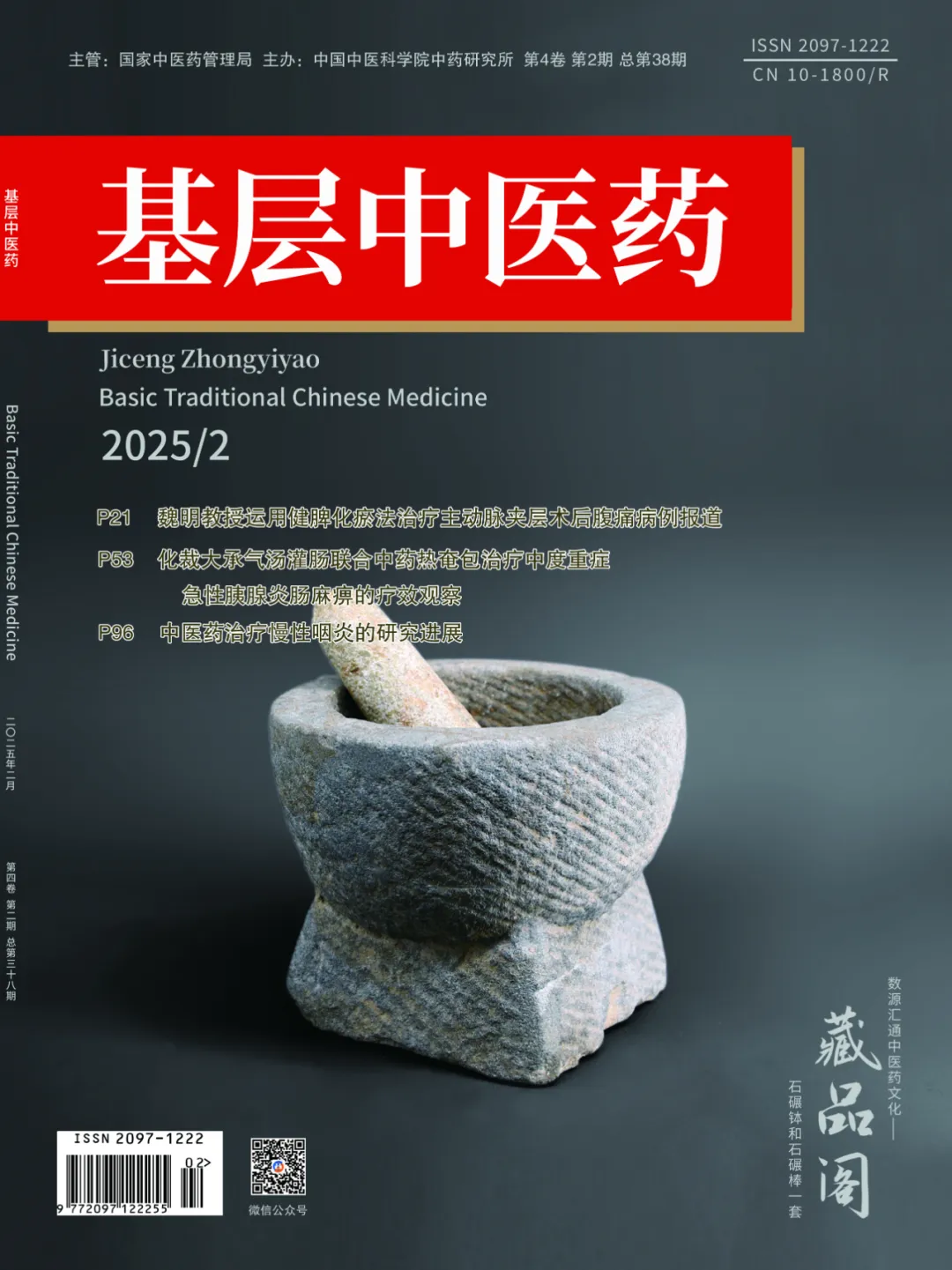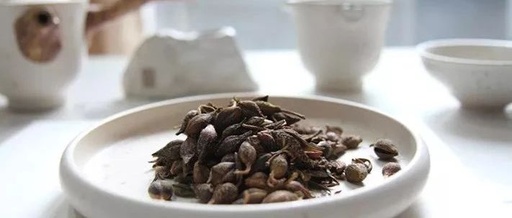In parks and along roadsides, one can often see a plant that blooms with bright golden flowers, devoid of leaves. The flowers are tubular and split into four lobes, appearing singly or in clusters of two to three. While they may not be particularly beautiful upon close inspection, their vibrant color makes them stand out; this is Forsythia.

How to Distinguish Between Forsythia and Jasmine?
Forsythia and early spring Jasmine both belong to the Oleaceae family, hence they appear similar. However, the first distinction is that Jasmine has six petals, while Forsythia has four lobes; secondly, Jasmine is shorter, whereas Forsythia is taller.
The Forsythia used in traditional Chinese medicine is its fruit: the mature fruit is called “Lao Qiao” (老翘), while the immature fruit is referred to as “Qing Qiao” (青翘). According to the Pharmacopoeia of the People’s Republic of China, Forsythia is slightly cold in nature, bitter in taste, and enters the Lung (肺), Heart (心), and Gallbladder (胆) meridians. It has the effects of clearing heat and detoxifying, reducing swelling and dispersing nodules, and dispersing wind-heat. Clinically, it is commonly used for acute wind-heat colds, carbuncles, and lymphatic tuberculosis, urinary tract infections, and is often referred to as the “sacred medicine for sores” in traditional Chinese medicine.
The fruit of Forsythia contains Forsythoside, saponins, and vitamin P, which can treat scrofula, erysipelas, rashes, and influenza, and also has antibacterial, cardiotonic, diuretic, antiemetic, hepatoprotective, anti-infective, and cardiovascular protective effects.

In terms of consumption, Forsythia seeds can be used to extract edible oils, and the tender shoots of Forsythia can be processed into tea, achieving the effects of clearing heat, detoxifying, and reducing fire.
In the realm of beauty and skincare, Forsythia also has its place. Boiling the flowers and immature fruits of Forsythia in water for 20 minutes to extract the juice can be used to wash the face every morning upon waking or every night before sleeping, providing excellent antibacterial, anti-mite, and skin-nourishing effects. Long-term use can eliminate facial melasma, butterfly spots, and reduce acne and wrinkles.
Supervised by the National Administration of Traditional Chinese Medicine
Organized by the Institute of Chinese Materia Medica, Chinese Academy of Traditional Chinese Medicine
Traditional Chinese Medicine Knowledge Health and Wellness Information


Copyright of this article belongs to Family Traditional Chinese Medicine. Unauthorized reproduction or excerpting is prohibited. The copyright of the images belongs to the original authors.
Any prescriptions mentioned should be used under the guidance of a physician.
Author of this article:Qi Shuyah, Zhang Mengjie
Editor of this article:Chaoyang



